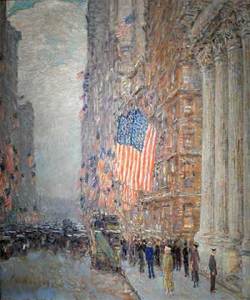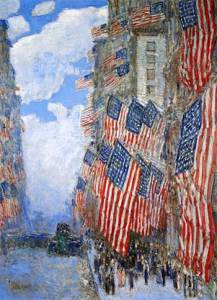Painters captured joy, pride and colors of flags
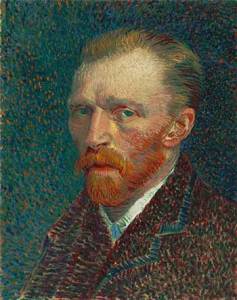
In the four decades between 1878 and 1918, three major artists in France and America who are marking significant anniversaries deployed their talents to create dozens of striking images of flags. They captured the movement, colors and patriotic echoes of the banners. The list includes Claude Monet, who was born 175 years ago; Vincent van Gogh, who died 125 years ago; and Childe Hassam, who died 80 years ago.
MONET
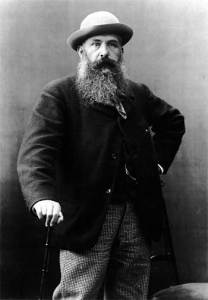
Around Bastille Day, July 14, 1878, Monet produced twin paintings that depicted the thousands of tri-color French flags that had been unfurled around Paris. There were two reasons for the displays: the usual patriotic pride occasioned by the holiday that memorialized the French Revolution in the 18th century and a celebration of the renewed French Republic.
The artworks depict two streets, La rue Montorgueil à Paris and La rue Saint-Denis. A critic complimented the first image for its “impressionist technique, with its multitude of small strokes of color,” which “suggests the animation of the crowd and the waving of flags.”
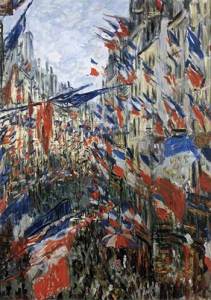
An assessment of the second painting described it as a “street flooded with jubilant Parisians…with a strong sense of perspective” and “flashes of color, the fluttering, flapping, twisting flags dominat[ing] the space.”
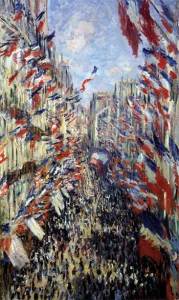
VAN GOGH
Twelve years later, in mid-July 1890, Holland-born van Gogh set up an easel in his rented room in Auvers, France, and looked out the window. He spied rows of flags and pennants that had been strung on the town hall to celebrate Bastille Day, which is equivalent to the Fourth of July in the United States.
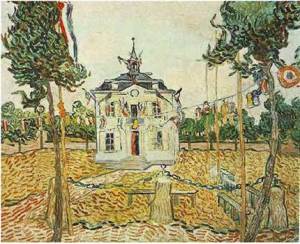
With the strokes of his brushes, guided by the keenness of his eyes, the artist caught the flurry of flags, emblematic of the excitement that accompanied the occasion.
Ironically, that jubilant moment was followed by tragedy: Van Gogh died just days later on July 30.
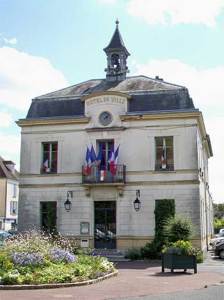
HASSAM
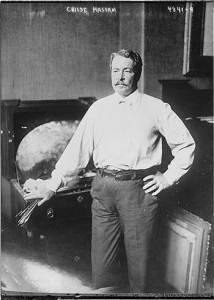
About 100 years ago, during World War I, Boston native Childe Hassam, in a burst of patriotism, went on a painting binge and turned out nearly 30 images of American flags.
An uncredited art critic for The New York Times said that the images “have extraordinary gusto and gaiety, evoking just the temper in which you toss up your hat to get some of your joyousness into the air.”
Those words may have been penned by Elisabeth Luther Cary, who was an art critic for The Times for 25 years. A few days after Hassam’s death in 1935, she wrote: “I hardly can imagine a less comfortable task than the portraiture of the American flag, the patriotically glorious but esthetically difficult Stars and Stripes that stirred the hearts of our citizens….But…Childe Hassam lightly took the leap with reds and white and blues turned sensitive without losing essential force.”
